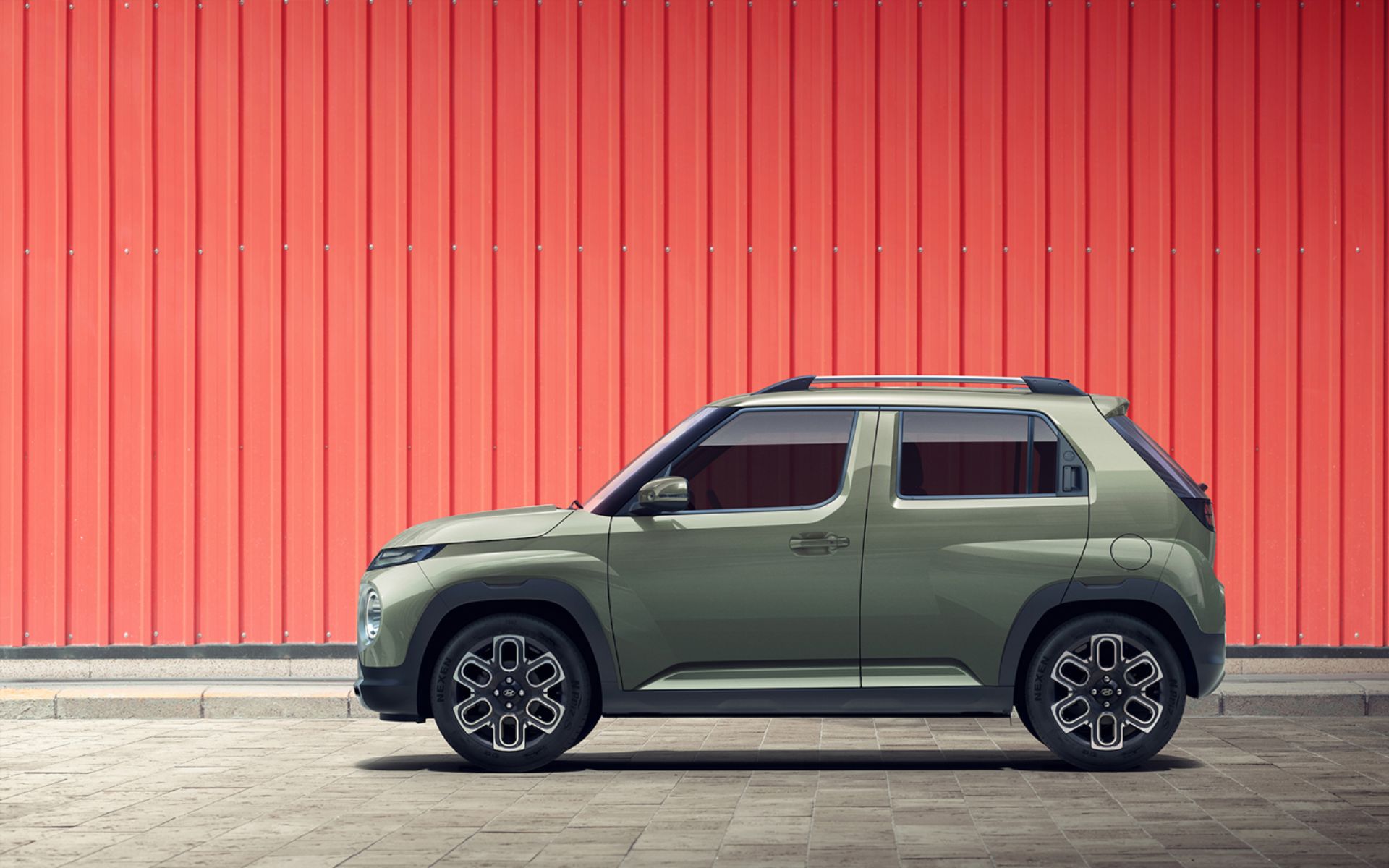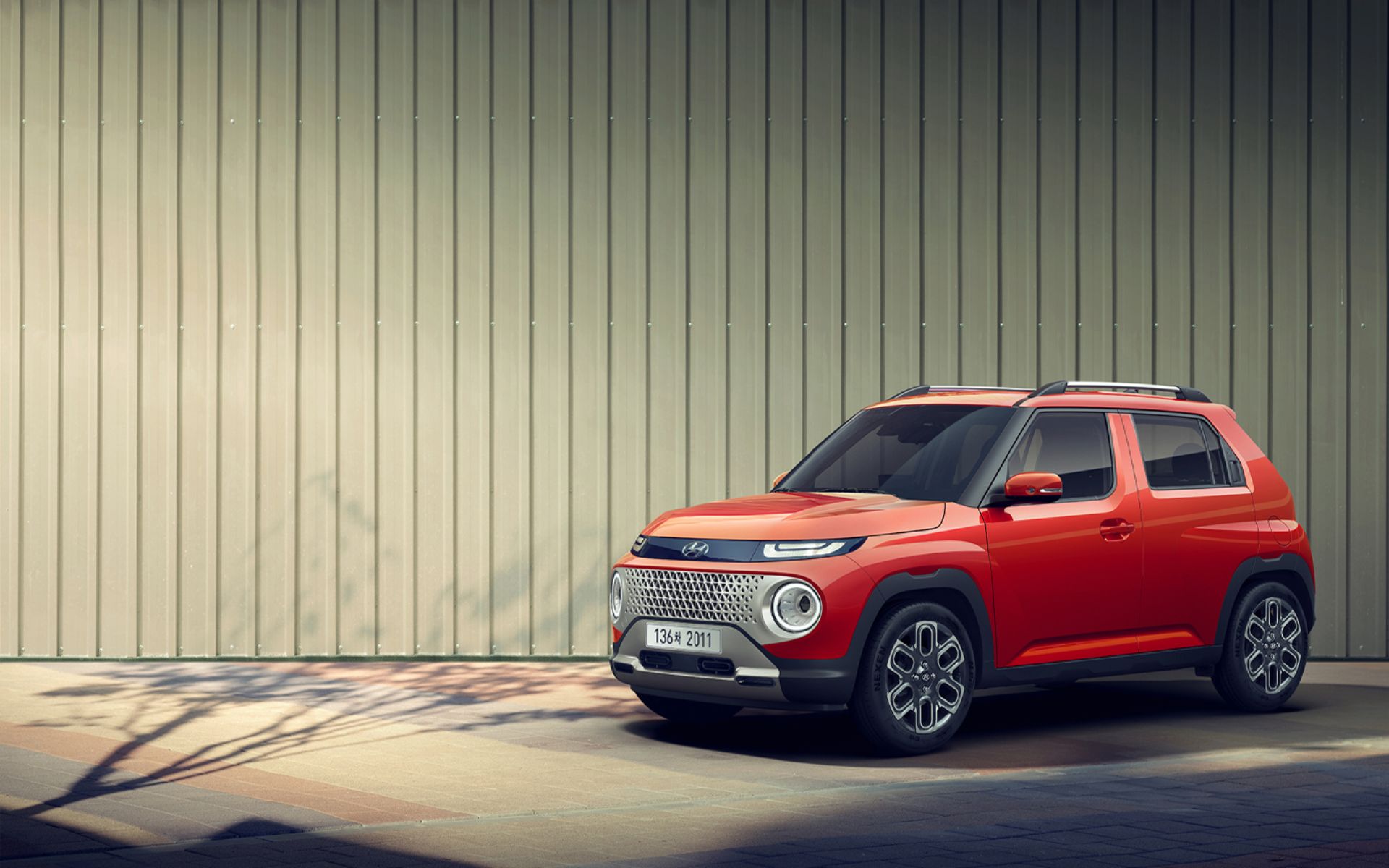Hyundai has revealed the first official images of the Casper, their entry-level A-Segment SUV that is scheduled to launch before the end of the year. The company announced an early bid reservation schedule for customers in Korea through Casper’s dedicated website.
The tiny SUV, initially codenamed AX-1, was spotted during testing in February and appeared in a set of teaser images last May. Most of us have associated the name Casper with the little ghost character, but Hyundai states that it was actually named after the famous skateboard-flipping trick invented by Bobby “Casper” Boyden in the ’70s.
The signature design feature of the Casper is the large circular LEDs on the front bumper, part of the split-headlights. The base model has a parametric grille design painted in silver, while the “active” variant has a black grille with additional circular intakes for the intercooler, signaling the presence of a turbocharged engine. At the back, the parametric taillights are integrated with the rear windscreen, while the round reflectors are mirroring the look of the front end.
A purposeful SUV look has been achieved thanks to the addition of skid plates, plastic cladding all around the bodywork, dynamic bonnet, boxy fenders, and roof rails, in combination with the relatively high ground clearance. The overall proportions, the black A-pillars, and the chamfer around the side windows look quite similar to the Suzuki Ignis which is considered one of the main rivals of the Casper.
Local media suggest that the Casper is measuring 3,595 mm (141.5 inches) long, 1,595 mm (62.8 inches) wide, and 1,575 mm (62 inches) tall, with a 2,400 mm (94.5 inches) wheelbase. Those numbers make it significantly more compact than Hyundai’s B-SUVs sold in different parts of the world including the Bayon, Creta, Venue, and Kona.
Hyundai’s new SUV is based on the K1 Platform which already underpins A-Segment models like the Hyundai i10 and the Kia Picanto. The engine range in the Korean market will include two three-cylinder petrol motors – a naturally aspirated 1.0 MPI and a turbocharged 1.0 T-GDI. Those engines produce 75 hp (56 kW / 76 PS) and 99 hp (74 kW / 100 PS) in the Hyundai i10, where they are combined with a five-speed manual gearbox or a five-speed automatic. It is safe to assume that the same setup will be used in the Casper, likely offered exclusively in front-wheel drive variants.
The Casper is expected to be exported in India, where it is rumored to get the naturally aspirated 1.2 Kappa MPI four-cylinder engine that is currently producing 83 hp (62 kW / 84 PS) in the Hyundai i10 Nios. Last but not least, there might be a fully electric variant coming in mid-2023, using an integrated drive module (iDM) supplied from BorgWarner.
Read Also: Hyundai Expected To Launch Electric City Car In 2023
We expect to learn more about the Hyundai Casper in the following months. Production is rumored to start on the 15th of September in Korea, so the official debut and market launch shouldn’t be far away. Hyundai hasn’t revealed any information about Casper’s availability in other markets.














